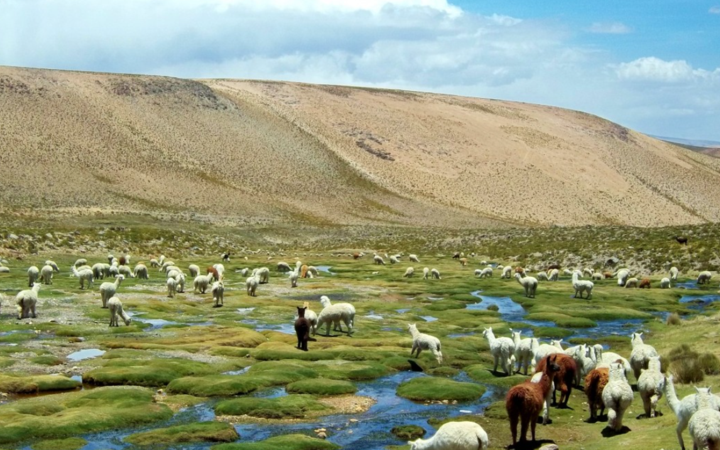Uranus may have a hidden ocean: the discoveries of the James Webb Space Telescope
The recent discovery of a possible hidden ocean on one of the moons of Uranus has excited the scientific community. The breakthrough by the James Webb Space Telescope (JWST) promises to advance understanding of icy bodies in the solar system and the possibility of extraterrestrial life. This article explores the journey of the James Webb Telescope The James Webb Space Telescope, a wonder of modern engineering and the successor to the Hubble Space Telescope, made another significant contribution to space exploration. By discovering what may be an ocean beneath the surface on one of Uranus' moons, the James Webb Space Telescope has opened up new horizons for understanding the dynamics and habitability of celestial bodies far from the Sun.
Recommend
Show key points
- The James Webb Space Telescope, launched in December 2021, was placed at Lagrange Point 2 to provide a stable and cool environment for infrared observations.
- Equipped with a large gold-plated mirror and advanced instruments, JWST can observe deep into the infrared spectrum, revealing ancient and distant cosmic phenomena beyond Hubble's capabilities.
- One of Uranus’ moons, Ariel, has attracted scientific interest due to geological signs suggesting the presence of a subsurface ocean.
- ADVERTISEMENT
- Ariel's surface features, including ridges, valleys, and icy volcanoes, hint at possible tectonic activity and interactions between its crust and an internal ocean.
- Spectral data collected by JWST revealed water ice, temperature variations, and traces of salts and organics on Ariel, supporting the theory of a chemically rich, hidden ocean.
- If confirmed, this subsurface ocean could offer a protected, life-supporting environment, potentially resembling Earth’s deep-sea hydrothermal ecosystems.
- This groundbreaking discovery highlights not only JWST’s immense capabilities but also opens up new possibilities for finding extraterrestrial life in the outer solar system.
1. Installation and launch of the James Webb Space Telescope.

The James Webb Space Telescope represents a collaborative effort between NASA, the European Space Agency and the Canadian Space Agency. It was launched on December 25, 2021 from the Guyana Space Center in French Guiana, and was placed at the Lagrange 2nd Point (L2), about 1.5 million kilometers from Earth. This site provides a stable environment for the operations of the James Webb Space Telescope, allowing it to observe the universe with unparalleled clarity.The primary mirror of the James Webb telescope, the optical telescope element, consists of 18 pieces of hexagonal mirrors made of gold-plated beryllium. These pieces combine to form a mirror with a diameter of 6.5 meters, which is much larger than the Hubble mirror of 2.4 meters. Hubble observes near-ultraviolet, visible, and near-infrared spectra (between 0). 1 to 1 μm (The James Webb telescope is observed in a lower frequency range, from visible light with a long wavelength to the middle of infrared radiation (from 0.6 to 28.3 μm), which will allow the observation of objects with high redshift that are very old and very far away, and the Hubble Space Telescope cannot detect in that area of infrared, and the telescope must be kept very cool to be able to observe by infrared radiation without interference I'm coming out. So, it will be deployed in space near the Sun-Earth Lagrange point L2. To keep the telescope's mirror and instrumentation temperature below 50 K, the large solar shield is made of 5 layers of silicon and aluminum coated capton polymer on both sides.
2. Major James Webb Space Telescope operations and results.
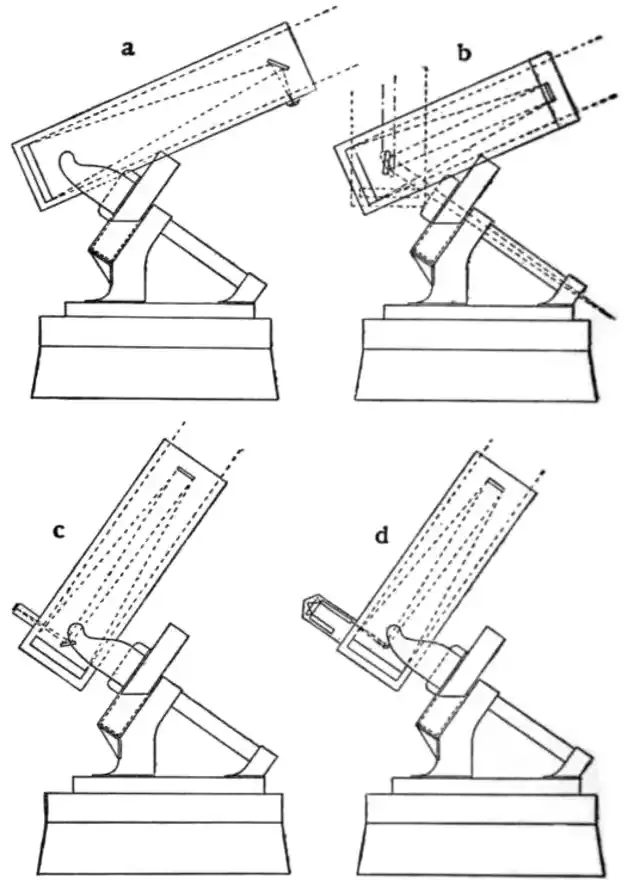
Since its publication, the James Webb Space Telescope has embarked on a mission to study the universe in the infrared spectrum. Its advanced instruments enabled the telescope to look through cosmic dust, take detailed images of distant galaxies, and uncover the secrets of planetary systems. Among his many achievements was the ability of the James Webb Space Telescope to analyze the chemical compositions of celestial bodies and its usefulness in identifying potentially habitable environments beyond Earth.
3. Uranus' moon: an overview.

Uranus, the seventh planet from the Sun, has a group of 27 known moons, each with unique characteristics. Ariel's moon, which is believed to have a hidden ocean, has captured the attention of astronomers due to its interesting geological characteristics and the possibility of liquid water beneath its icy surface. Understanding the structure and structure of this moon is critical to understanding the evolutionary history of the Uranus system.
4. Geography and geology of Ariel's moon.

The moon, tentatively identified as Ariel, is one of Uranus' larger moons. Its surface is characterized by a combination of pothole-filled terrain, areas characterized by fault lines and wide valleys. These geological features indicate a history of tectonic activity and possible interactions between the moon's ice crust and the subsurface ocean. The presence of icy volcanoes — volcanoes that erupt with water and other volatile substances instead of molten rock — also further supports this hypothesis.
5. Data collected on Ariel's moon by a telescope. Ghost
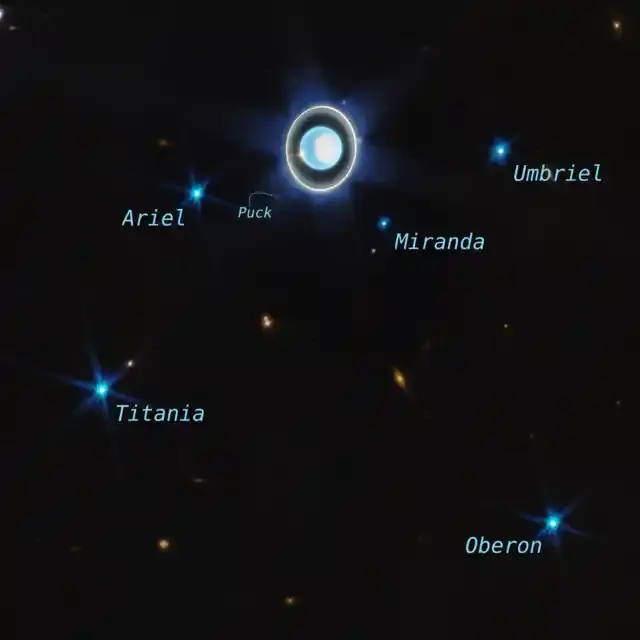
The advanced instruments of the JWST telescope have provided detailed spectral data on Ariel's surface composition. The discovery of specific wavelengths indicating the presence of water ice, along with differences in surface temperature, indicates the presence of liquid water beneath the moon's crust. In addition, the presence of certain salts and organic compounds suggests that the ocean beneath the surface may be chemically rich, creating a habitable environment.
6. The presence of an ocean on the moon of Uranus.
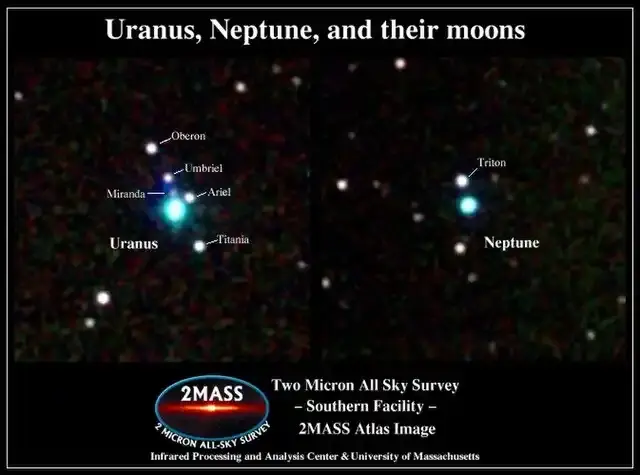
To confirm the presence of a subsurface perimeter on Ariel would be a tremendous discovery. Such an ocean, protected from harsh space radiation by a thick ice layer, can provide favorable conditions for life. The thermal and chemical energy sources available in this environment may support microbial ecosystems similar to those found in deep ocean thermal water vents on Earth. More expeditions and observations will be needed to verify these results and explore the possibility of life on Ariel.
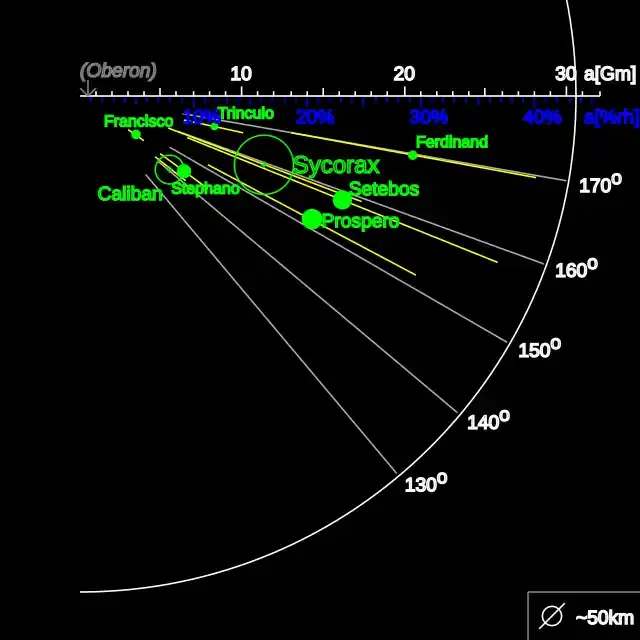
The discovery of a possible hidden ocean on one of Uranus' moons is a testament to the capabilities of the James Webb Space Telescope. As the James Webb Space Telescope continues to explore the universe, its results will undoubtedly reshape the understanding of the universe and the possibility of extraterrestrial life. The presence of an ocean beneath Ariel's surface not only enhances knowledge of the Uranus system, but also inspires future missions aimed at uncovering the secrets of the solar system's distant icy worlds.
In short, the James Webb Space Telescope has once again demonstrated its pivotal role in modern astronomy. By revealing the secrets of one of Uranus' moons, he paved the way for new scientific inquiries and the exciting possibility of discovering life in unexpected places.
![]()
A book that may interest you: pistachio theory
A book that might interest you - Pistachio Theory more- ADVERTISEMENT
![]()
Tips to reduce stress and focus during the day
Start your day with calm, healthy food, and quiet moments to reduce stress and boost focus. Short breaks, planning ahead, and winding down with hobbies or good sleep truly matter. These simple tips can refresh your energy and help you get through even the busiest days. more- ADVERTISEMENT
![]()
The dark side of early retirement
Early retirement sounds dreamy, but it's not all sunshine—many do it because they’re unhappy at work, feel hopeless, or want more time. But the risks are real: loneliness, regret, running out of money, and losing purpose. Think twice before jumping ship too early. more- ADVERTISEMENT
![]()
The future of food and technology - expectations you will not believe!
Technology & The Food Future - Unbelievable Expectations more- ADVERTISEMENT
![]()
6 cheap electronic tools for an easier life
Boost your lifestyle with affordable tech tools like fitness trackers for healthier habits, e-readers for book lovers on the go, and smart trackers to never lose your keys again. Add entertainment with a TV Stick 4K and stay powered anywhere with travel adapters and rechargeable batteries. Simple, smart, and efficient! more- ADVERTISEMENT
![]()
How to outperform everyone by acting like a CEO
Success isn't accidental—it’s built through CEO-like habits. Think strategically, decide with confidence, build strong networks, and manage time smartly. These executive behaviors shape a mindset that helps you grow, lead, and stand out in your career. Start adopting them now to pave your path to excellence. more- ADVERTISEMENT
![]()
Moon Magic: How the Lunar Influence Shapes Earth's Tides
The moon's magical pull creates amazing tides that shape our coasts and marine life. From fishing to clean energy, humans have long benefited from this natural rhythm. The moon's gravity isn't the only driver—factors like geography, wind, and the sun also play a big part in this fascinating phenomenon. more- ADVERTISEMENT
![]()
The city of Rimini on the Adriatic coast with its Roman history
Rimini blends beachside charm with rich history—from ancient Roman arches to Renaissance castles. Wander through art-filled streets, savor local pasta and fish soups, and explore unique spots like the Jampalonga Library or Fellini's first home. By the sea or in town, Rimini never stops giving. more- ADVERTISEMENT
![]()
The botanical marvel of the Andean ecosystem at high altitudes
The Andes are home to rare, exotic plants that have adapted to extreme climates with stunning shapes and colors. From insect-trapping fleshy plants to breathtaking orchids and mythical species like the giant vernie, these botanical wonders mesmerize with their beauty and resilience, yet face serious threats from climate change and human exploitation. more- ADVERTISEMENT
![]()
The four highest capitals in the world are located in Latin America, what are they?
Many Latin American capitals sit high in the mountains for reasons like cooler climates, better defense from pirates, and historical ties to indigenous sites. Cities like La Paz, Quito, and Bogotá remain notable for their altitude, beauty, and strategic importance since colonial times. more- ADVERTISEMENT




















